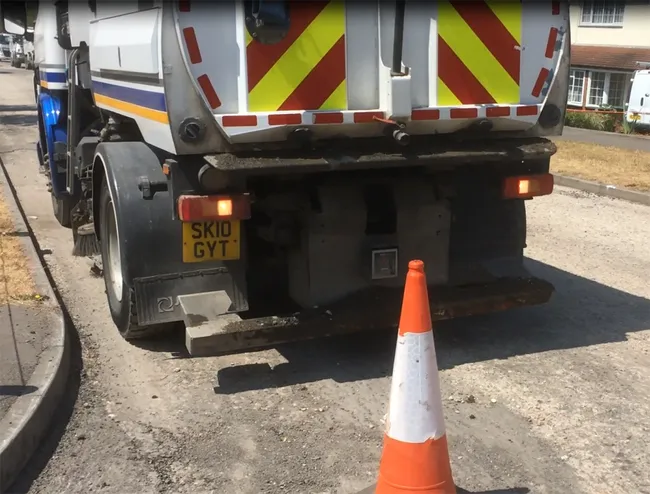The Mayor of London, Boris Johnson, and Transport for London (TfL) are keen to trial cutting-edge pedestrian crossing sensors to help make it easier and safer for people to cross the road throughout England’s capital.
The news comes alongside the completion of the first phase of the Pedestrian Countdown programme and the publication of 'Safe London Streets - Our Six Road Safety Commitments', a new document which makes clear how TfL, the boroughs and its partners will meet London's target of reducing the nu
March 11, 2014
Read time: 4 mins
The Mayor of London, Boris Johnson, and 2387 Transport for London (TfL) are keen to trial cutting-edge pedestrian crossing sensors to help make it easier and safer for people to cross the road throughout England’s capital.
The news comes alongside the completion of the first phase of the Pedestrian Countdown programme and the publication of 'Safe London Streets - Our Six Road Safety Commitments', a new document which makes clear how TfL, the boroughs and its partners will meet London's target of reducing the number of people killed and seriously injured on London's streets by 40% by 2020.
Said to be the first introduction of its kind globally, Pedestrian Split Cycle Offset Optimisation Technique, or 'pedestrian SCOOT', uses state-of-the-art video camera technology to automatically detect how many pedestrians are waiting at crossings.
It enables the adjustment of traffic signal timings automatically to extend the green pedestrian invitation to cross phase when large numbers of people are waiting, allowing more people to cross the road.
In addition, TfL is developing a 'call cancel' technology, which can detect when a pedestrian who has pushed the crossing button has either crossed before the signal goes green or walks away, and therefore cancels the pedestrian crossing phase.
This latest initiative follows on from TfL's successful development of Pedestrian Countdown technology, which tells pedestrians how long they still have left to cross the road once the green pedestrian phase has gone out.
Around 550 pedestrian crossings at 200 locations across 30 London boroughs have now been equipped with Pedestrian Countdown, with TfL committed to install the technology out more widely across the capital in the coming years.
The forthcoming trials are also an early example of how TfL will use innovation to change the management of London's road network to better reflect the character of the local area, which was one of the key recommendations in the Mayor's Roads Task Force which was published in July 2013.
Subject to the outcome of the trials, TfL is hopeful that it can further develop the technology to use at other high footfall areas such as outside sporting venues or along busy high streets.
Mayor of London, Boris Johnson, said, “I am delighted that London is the first city in the world to be trialling this cutting-edge equipment, which will benefit pedestrians across the city.
“This really is a fantastic example of how London is leading the way by using 21st century technology to help make it easier for people to get around our great city.
“Innovation like this is key to keeping London moving efficiently and making our roads safer for everyone to use.'
Leon Daniels, managing director of Surface Transport, said, 'We are fully committed to improving road safety for all road users across London, especially pedestrians.
'These new trials of pedestrian detection technology will allow our traffic signals to become even more intelligent, bringing huge benefits to those waiting to cross the road where there is heavy pedestrian demand.'
Councillor Val Clark, chairman of the London Road Safety Council, said: “We welcome these innovative trials and fully support the six road safety commitments being made by Transport for London.
“We feel that they provide a vital focus on key areas of concern and provide a framework for strong partnerships to enable further collision and casualty savings to be made in the Capital.”
The first trials of pedestrian SCOOT will take place on crossings outside Balham and Tooting Bec Underground stations this summer to allow TfL to fully test the pedestrian sensors and how they interact with the existing vehicle SCOOT system.
The 'Safe London Streets' document underpins the 56 actions outlined in the Safe Streets for London Plan and highlights the Mayor's sustained commitment to continue to work with its partners to make London's roads safe.
The news comes alongside the completion of the first phase of the Pedestrian Countdown programme and the publication of 'Safe London Streets - Our Six Road Safety Commitments', a new document which makes clear how TfL, the boroughs and its partners will meet London's target of reducing the number of people killed and seriously injured on London's streets by 40% by 2020.
Said to be the first introduction of its kind globally, Pedestrian Split Cycle Offset Optimisation Technique, or 'pedestrian SCOOT', uses state-of-the-art video camera technology to automatically detect how many pedestrians are waiting at crossings.
It enables the adjustment of traffic signal timings automatically to extend the green pedestrian invitation to cross phase when large numbers of people are waiting, allowing more people to cross the road.
In addition, TfL is developing a 'call cancel' technology, which can detect when a pedestrian who has pushed the crossing button has either crossed before the signal goes green or walks away, and therefore cancels the pedestrian crossing phase.
This latest initiative follows on from TfL's successful development of Pedestrian Countdown technology, which tells pedestrians how long they still have left to cross the road once the green pedestrian phase has gone out.
Around 550 pedestrian crossings at 200 locations across 30 London boroughs have now been equipped with Pedestrian Countdown, with TfL committed to install the technology out more widely across the capital in the coming years.
The forthcoming trials are also an early example of how TfL will use innovation to change the management of London's road network to better reflect the character of the local area, which was one of the key recommendations in the Mayor's Roads Task Force which was published in July 2013.
Subject to the outcome of the trials, TfL is hopeful that it can further develop the technology to use at other high footfall areas such as outside sporting venues or along busy high streets.
Mayor of London, Boris Johnson, said, “I am delighted that London is the first city in the world to be trialling this cutting-edge equipment, which will benefit pedestrians across the city.
“This really is a fantastic example of how London is leading the way by using 21st century technology to help make it easier for people to get around our great city.
“Innovation like this is key to keeping London moving efficiently and making our roads safer for everyone to use.'
Leon Daniels, managing director of Surface Transport, said, 'We are fully committed to improving road safety for all road users across London, especially pedestrians.
'These new trials of pedestrian detection technology will allow our traffic signals to become even more intelligent, bringing huge benefits to those waiting to cross the road where there is heavy pedestrian demand.'
Councillor Val Clark, chairman of the London Road Safety Council, said: “We welcome these innovative trials and fully support the six road safety commitments being made by Transport for London.
“We feel that they provide a vital focus on key areas of concern and provide a framework for strong partnerships to enable further collision and casualty savings to be made in the Capital.”
The first trials of pedestrian SCOOT will take place on crossings outside Balham and Tooting Bec Underground stations this summer to allow TfL to fully test the pedestrian sensors and how they interact with the existing vehicle SCOOT system.
The 'Safe London Streets' document underpins the 56 actions outlined in the Safe Streets for London Plan and highlights the Mayor's sustained commitment to continue to work with its partners to make London's roads safe.









